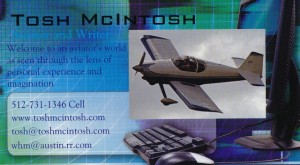 One of the issues discussed in the aftermath of this accident and mentioned in a previous post in this logbook is that of emergency locator transmitters, or ELTs. AVweb has a recent article and blog post on this subject and offers the opinion that the time has come to eliminate the requirement for them altogether.
One of the issues discussed in the aftermath of this accident and mentioned in a previous post in this logbook is that of emergency locator transmitters, or ELTs. AVweb has a recent article and blog post on this subject and offers the opinion that the time has come to eliminate the requirement for them altogether.
For those not familiar with the term, an ELT is a standby radio, powered independently of an aircraft’s electrical system and designed to activate upon sensing a minimum threshold g force typically associated with airplane crashes. Its job then is to send out a signal on a standard emergency frequency to alert other airplanes and assist search and rescue in responding to the crash site.
For years, ELTs have relied on signals that require line-of-sight. If the accident airplane is on the other side of a mountain, or deep in a valley, the reception area of the signal is substantially reduced. It will not be heard by other airplanes in the vicinity or search and rescue when they finally begin looking unless line-of-sight exists from one to the other.
A new generation ELT operates on a different frequency and uses satellites to expand the potential reception area. The distress signal is detected by a satellite and relayed to other airplanes, which can then home in on the signal to accurately determine the position of the downed airplane.
The accident airplane was equipped with this new generation ELT, and one of the initial questions was why did it take so long from the time of the crash until anyone suspected that something had happened. As reported within a few days of the crash, a more timely response would not have made a difference to those occupants who did not survive, but the question remains as to why the newest and supposedly greatest version of ELT didn’t activate.
And the answer is so simple as to be maddening: because the primary cause of ELT activation failure has not been addressed, which is physical damage to the unit during the impact sequence. Satellite monitoring can’t help if the antenna is ripped from the unit upon impact (as happened in this case), or the antenna is covered by wreckage, or the wreckage happens to be submerged in water.
 The referenced article and blog post in AVweb suggest that the time has come to abandon ineffective reliance on ELTs and transition to far more reliable methods now available. The comments posted on AVweb for the blog provide an in-depth discussion of the pros and cons of this approach, and I won’t attempt to summarize them here.
The referenced article and blog post in AVweb suggest that the time has come to abandon ineffective reliance on ELTs and transition to far more reliable methods now available. The comments posted on AVweb for the blog provide an in-depth discussion of the pros and cons of this approach, and I won’t attempt to summarize them here.
What I will do is condemn the massive lethargy and resistance to change so prevalent in any bureaucratic organization and taken to lofty heights in the Federal Aviation Administration. To accept the current statistical failure rate of both old and new generation ELTs without aggressively addressing the problem is a travesty in the extreme.
You can read more on AVweb by looking for the article titled “Alaskans Question the Value of ELTs” and the insider blog post titled “Let’s Ditch ELTs.”


